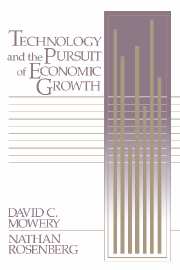Book contents
- Frontmatter
- Contents
- Preface
- Part I Introduction
- Part II The development of the institutional structure, 1860–1940
- 2 The growing role of science in the innovation process
- 3 The beginnings of the commercial exploitation of science by U.S. industry
- 4 The U.S. research system before 1945
- 5 The organization of industrial research in Great Britain, 1900–1950
- Part III The development of the postwar system, 1940–1987
- Part IV New environment, new research organizations
- Bibliography
- Index
5 - The organization of industrial research in Great Britain, 1900–1950
Published online by Cambridge University Press: 22 March 2010
- Frontmatter
- Contents
- Preface
- Part I Introduction
- Part II The development of the institutional structure, 1860–1940
- 2 The growing role of science in the innovation process
- 3 The beginnings of the commercial exploitation of science by U.S. industry
- 4 The U.S. research system before 1945
- 5 The organization of industrial research in Great Britain, 1900–1950
- Part III The development of the postwar system, 1940–1987
- Part IV New environment, new research organizations
- Bibliography
- Index
Summary
A central factor in Britain's uneven economic fortunes since 1900 has been the poor innovative record of its industry. Partly because innovation lagged, British manufacturing productivity and exports grew more slowly than those of its industrial competitors. The innovative performance of British firms was affected by low levels of industrial research, in which British firms invested fewer resources than did American enterprises during 1900–50. The organization of British industrial research, which contrasted with that of the United States during this period, may also have undermined its effectiveness. The persistence of extramural research within Great Britain, in addition to the lower levels of overall industrial investment in research, appears to have impaired the innovative performance of British firms. The different histories of corporate development in these two economies produced different R&D systems, with direct consequences for innovative and competitive performance. Comparing the development and organization of industrial research in these two economies can therefore illuminate some of the issues that are discussed elsewhere in this volume.
During the 1900–50 period, the share of British exports in total world trade declined substantially more than did the British share of world manufacturing output; even more dramatic was the absolute decline in British exports during the 1920s. Declining exports reflected the continued dependence of British foreign trade on such staple commodities as coal, iron, and textiles (see Matthews, Feinstein, and Odling-Smee, 1982).
- Type
- Chapter
- Information
- Technology and the Pursuit of Economic Growth , pp. 98 - 120Publisher: Cambridge University PressPrint publication year: 1989



